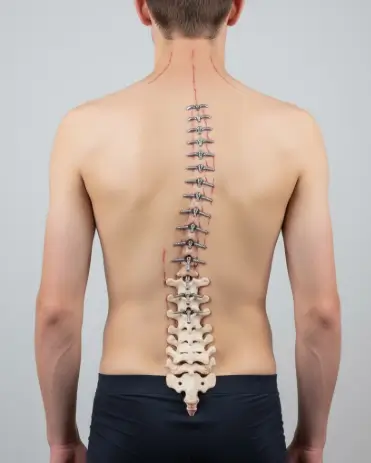- Home
- Spinal Deformity
Spinal Deformity
- Spinal Deformity Specialist
Spinal Deformity Treatment in Los Angeles, CA
When your spine starts to curve or twist out of alignment, everyday activities even standing or sitting can become painful and exhausting. A spinal deformity doesn’t just affect your posture; it can limit your mobility, breathing, and overall quality of life.
At our Los Angeles spine center, Dr. Albert P. Wong provides advanced, patient-focused care for spinal deformities using modern, minimally invasive techniques. His goal is to help you stand taller, move freely, and live with less pain.
- What It Is
What Is a Spinal Deformity?
A spinal deformity is an abnormal curvature, rotation, or misalignment of the spine. While some deformities are present from childhood, many develop later in life due to wear, injury, or underlying spinal conditions.
Common types include:
- Scoliosis – a sideways curvature of the spine
- Kyphosis – an exaggerated forward rounding of the upper back
- Lordosis – an excessive inward curve of the lower back
These deformities can cause chronic pain, stiffness, and nerve compression that interfere with daily living.

Common Symptoms
Spinal deformities vary in severity, but many patients notice a combination of the following symptoms:
- Uneven shoulders, hips, or waist.
- Visible hump or curve in the back.
- Chronic back pain or muscle fatigue.
- Numbness, tingling, or weakness in the legs.
- Trouble standing upright for long periods.
- Breathing difficulties (in more severe deformities).
Causes & Risk Factors
Spinal deformities can arise from a variety of conditions or changes over time. The most common causes include:
- Degenerative disc disease or arthritis.
- Osteoporosis leading to vertebral fractures.
- Spinal stenosis or spondylolisthesis (vertebral slippage).
- Congenital spine abnormalities present at birth.
- Trauma or injury to the spine.
- Neuromuscular conditions such as cerebral palsy or muscular dystrophy.
According to the Mayo Clinic and NIH, adults often develop deformities as part of the aging process, while children and adolescents may be affected by growth-related changes.
Diagnosis & Evaluation
Accurate diagnosis is essential for creating an effective treatment plan. Dr. Wong uses state-of-the-art imaging and diagnostic tools to assess your spinal alignment and nerve health, such as:
- Standing X-rays, to evaluate curvature and balance.
- MRI scans, to detect nerve compression or disc damage.
- CT scans, for detailed bone structure imaging.
- Physical and neurological exams, to assess strength and flexibility.
Treatment Options
Treatment for spinal deformities depends on the severity of the curve, your symptoms, and your overall health. Dr. Wong tailors each plan to the patient’s needs, prioritizing both function and comfort.
Non-Surgical / Conservative Treatments:
- Physical therapy to strengthen core muscles and improve posture.
- Bracing, particularly for younger patients with progressive curves.
- Pain management techniques to relieve muscle tension and nerve irritation.
- Activity modification and ergonomic support.
Surgical Treatments:
When deformities cause significant pain, nerve compression, or spinal imbalance, surgery may be the most effective option. Dr. Wong specializes in:
- Minimally Invasive Spinal Reconstruction.
- Spinal Fusion for stability and alignment.
- Osteotomy (spinal realignment surgery) for severe curvatures.
- Get Appointment
Schedule Your Consultation with Dr. Albert Wong in Los Angeles
Take control of your spine health. Dr. Wong offers precise, patient-centered treatments to correct deformities and restore your quality of life.
- Faqs
FAQs About Spinal Deformity
Learn more about spinal deformities, their causes, symptoms, and treatment options with expert care from Dr. Albert Wong in Los Angeles.
Yes. Treatment plans are tailored to the patient’s age, severity of the deformity, and overall health, ensuring safe and effective care for both children and adults.
Yes. Some deformities, especially degenerative or untreated conditions, can progress and lead to increased pain, decreased mobility, or nerve complications.
Surgery is considered when the deformity causes significant pain, neurological symptoms, or progressive spinal misalignment that cannot be managed conservatively.
Treatment depends on the type and severity and may include physical therapy, bracing, pain management, or surgical correction using advanced spine techniques.
Diagnosis involves a physical exam, X-rays, MRI, or CT scans to evaluate the spine’s alignment and determine the severity of the deformity.
